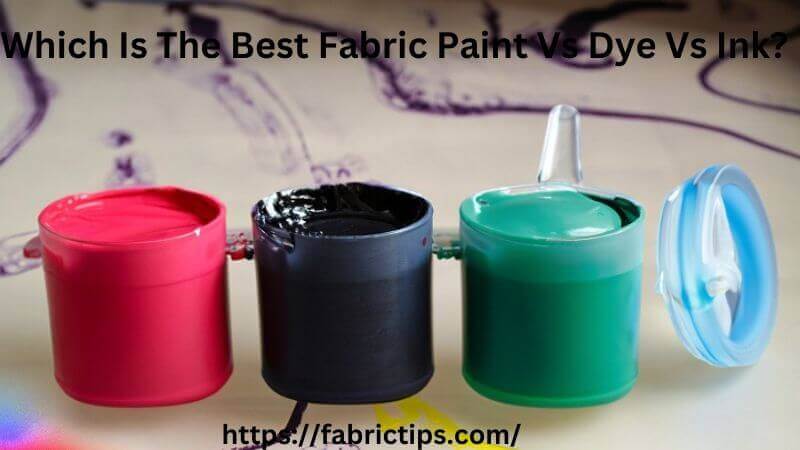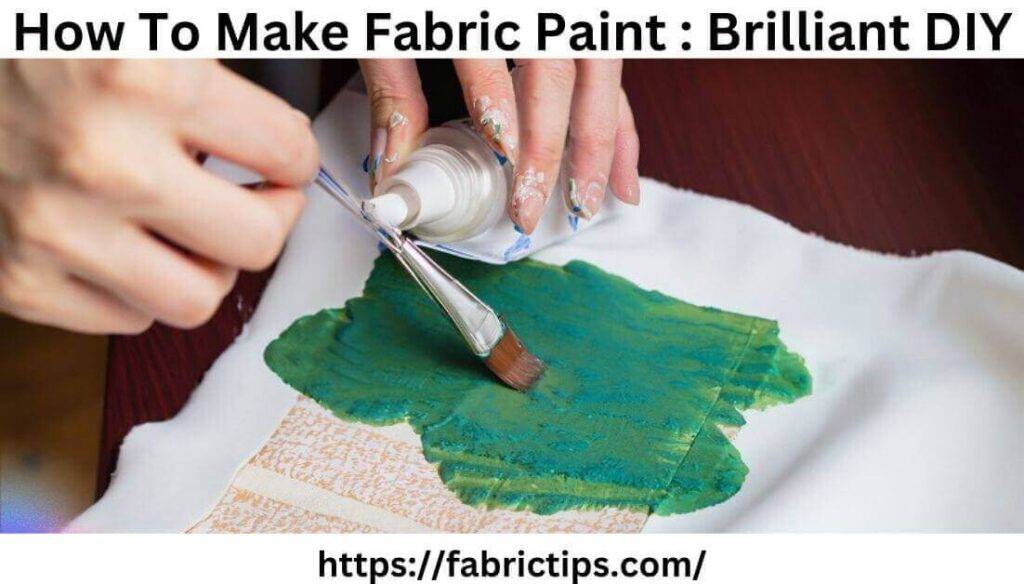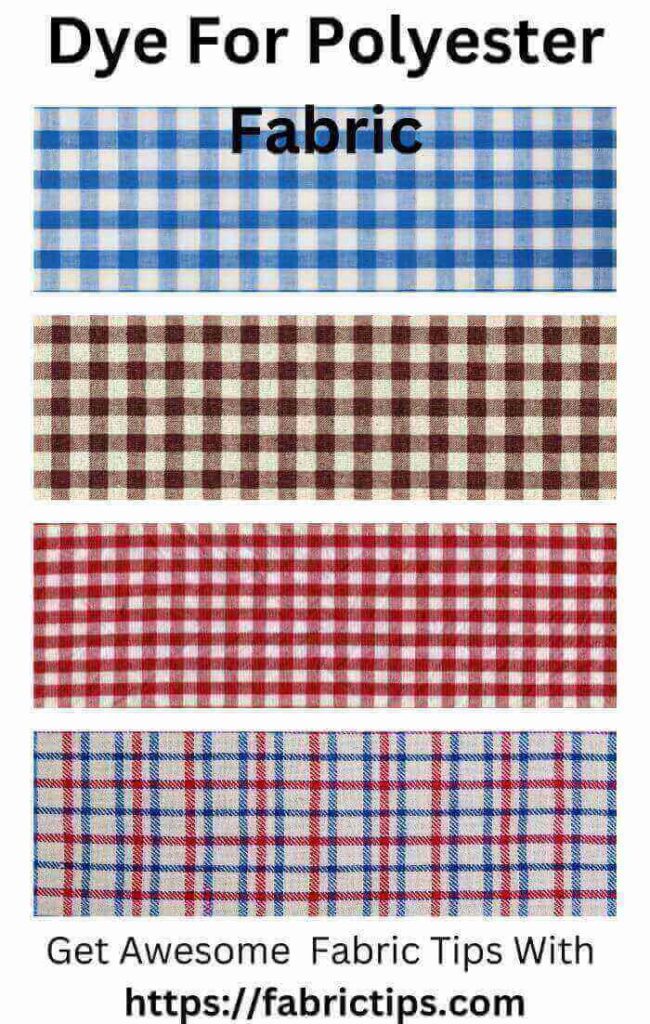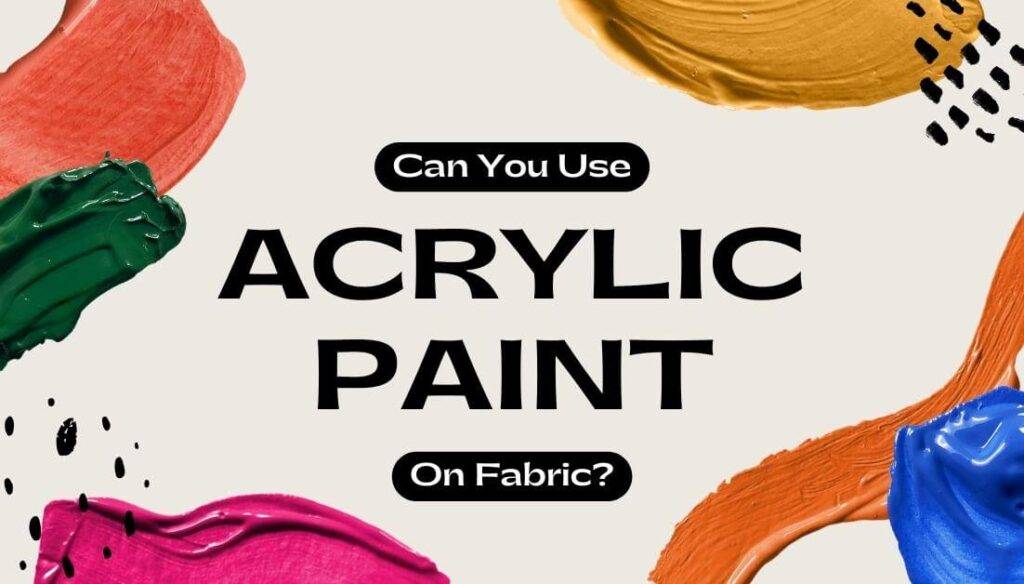Last Updated on December 13, 2025 by Wahid
Suppose you painted your artwork on fabric. The feeling is wonderful. In spite of the rainbow of colors available, not everyone is inclined to purchase several cans of fabric paint.
Well, why spend money on something that you can produce yourself? Yes, fabric paint can be DIYed. Further, why settle on the store’s colors? With fabric paint, you can customize clothes, t-shirts, pillows, sheets, bags, and many other items. Using simple & raw ingredients, color possibilities are endless!
By following this guide, you will discover how to make fabric paint at home. In the end, the DIY fabric paint looks fantastic, and it is washable & doesn’t require a heat setting. As a start, let’s examine the ingredients you will need.
How To Make Fabric Paint : Detailed Instructions

According to a quick Google search, acrylic paint can be made into fabric paint – by combining acrylic color medium with acrylic paint. It would be great if we had any, however, we didn’t, which meant I had to dig a bit deeper.
Supplies You’ll Need:
- As a test fabric (consider using a similar fabric for your final painting)
- Iron or ironing board
- Foam brush
- Containers with tight lids
- Acrylic paint
To create fantastic fabric paint, we need to follow some simple steps.
Step 1: Mix The Paint
This section discusses how to make fabric paint from acrylic paint. Acrylic paint is thicker than fabric paint, which is the main difference. It can sometimes result in color flaking and stiffness in the fabric. Using isopropyl or water, you can thin the solution.
However, liquids can leak from fabrics slowly rather than staying. For mixing paint, we have found 3 different methods. Whatever ingredients you have on hand, you can choose the method.
Method 1:
The Following Items Are Needed:
- Acrylic paint
- Acrylic medium
- In this method, the acrylic medium was used to thin primary acrylic paint. My choice of medium was Liquitex gloss medium.
- Light-colored fabrics typically use the medium. If you plan to paint darker colors, you should use an opaque gloss medium or a matte medium.
- In order to achieve an appropriate thickness, combine acrylic medium with paint in an equal quantity. Using this method, you can thin acrylic paint.
Method 2:
The Following Items Are Needed:
- White glue (1 tablespoon)
- Shaving cream (3 tablespoons)
- Acrylic paint (1 tablespoon)
- Spoon or stick
- Add 3 tablespoons of shaving cream to a container. Then add 1 tablespoon of white glue to it.
- Measurements are important, so be careful when you make them.
- Make sure it’s mixed properly. Once the components have been mixed, paint them with acrylic paint.
- Ensure proper mixing. That’s it. Mixing has been completed.
Method 3:
The Following Items Are Needed:
- Glycerin
- White vinegar
- Tap water
- Acrylic medium
- In the beginning, combine 20 ml of water, and 10 ml of white vinegar with 10 ml of glycerin, then shake well.
- When you mix acrylic paint with DIY medium, you will get fabric paint.
Step 2: Test The Paint
- There are several types of acrylic paint, and they are not all created equal. A fabric’s thickness determines the thickness of the color. To get the right look, you must get the proper consistency.
- A test fabric will be needed for this step. Prior to implementing your paint, you should test it. Using the test fabric, test the color. Make sure the material you select is similar to what you want to perform.
- Now, if the paint soaks up the fabric, paint it again with acrylic paint. Similarly, if drying results in unbearable stiffness, increase the amount of acrylic medium.
Step 3: Apply Heat-Set On Paint
- You should hold the iron over medium heat for at least 5 minutes. Then, when the paint has completely dried out, heat-set it with an iron, but avoid using steam.
- Once it has been heat-set, you should wash the cloth the same way you would paint it. Tumble-drying could be a better alternative to hanging.
- You’ll be able to wear it comfortably and softly. Try adding more medium if your paint is still thick.
Step 4: Your Fabric Is Ready
- Now, your fabric paint is ready.
- It allows you to make countless colors once you’ve mastered the technique.
- Creating custom pillows, clothing, and accessories is now easier than ever.
Why Turn Acrylic Paint Into Fabric Paint?

Now, let’s consider the bigger picture. Why would we want to turn “acrylic paint” into “fabric paint?”
1. To Save Money & Space on Your Craft Supplies
Since my craft supplies are overflowing, I’m always trying to save space. Why keep similar items in the same place? Why waste twice as much money on more items stored? As a result, you will be able to streamline your processes.
2. To Match Items With Different Paint Types
Using this method, you can match items made of different materials. As an example, here are the White, Blue, and Red Kitchen Utensils to match the Tea Towels.
3. Fabric Paint Comes in Big Containers & Is Pricey
Basically, the fabric paint price starts at up to $20 per container, which can generally add if you want to use multiple colors. However, the containers are quite large which is plenty to store. Plus, you might not need the fabric paint volume in the big container.
How To Turn Acrylic Paint Into Fabric Paint

Acrylic paint can be transformed into fabric paint with the help of one simple furnish: “Fabric Medium.” My preferred medium is this Liquitex Fabric Medium shown below. This brand is a tried & true choice for all types of medium: “matte medium,” “pouring medium,” and more.
A “painter’s palette” or “bowl” will be needed to create fabric paint. The fabric medium should be mixed with the paint in a ratio of about 2 parts fabric medium to 1 part paint. It does not need to be calculated perfectly, instead, look forward to a specific paint consistency that we explain below.

How Thick Should Fabric Paint Be?

Actually, Fabric paint must be the consistency of thick syrup. This paint should be capable of shifting a bit whenever you change the palette to its side. Fabric dye consistency is very important.
Be careful that acrylic paint works fine on clothes without fabric medium. Thus, you can even apply matte medium, gel medium, matte medium, or pouring medium to receive nearly a similar result. Fabric medium is the best only reason that it’s specifically designed to be applied with fabric.
Things To Note:
- To prepare your fabric for heat setting, make sure the garment is dehydrated.
- If you want to heat-set, you can use a hairdryer or the sun.
- However, ironing is the most preferred method. Don’t let the iron burn the fabric by moving it around. Protect the iron from damage by covering it with baking paper.
- Ideally, fabric paints should only be used on natural fabrics. These include linen and cotton. It is necessary to use pure acrylic when treating materials like lycra fleece.
- Heat-set items can be washed once they have been heated. Well, if you do not properly heat-set the paint after washing, it will look patchy.
Knowing that fabric paint can be made, we’ll examine some of its advantages & disadvantages.
Advantages Of Fabric Paint:
- The process is easier than dyeing fabric or painting with acrylics.
- Preparing the fabric won’t require any special treatments.
- Moreover, its application is more effortless.
- No toxic chemicals are used in this paint. Hence, the product is suitable to use in the home.
- Basically, colors should not be applied to ingestible items and also to the skin.
- The pigment is richer, resulting in a superior finish.
- Using fabric paint enables you to create various textures, colors, and finishes.
Disadvantages Of Fabric Paint:
- Typically, it won’t bond to fabric like a dye. Due to this, there are still some textural problems.
- The fabric might not match what you expected.
- In fact, it’s physical outside of the fabric only, not completely inside.
- Over time, the paint may fade.
- The pigment may leak into the washer or dryer.
Which Is The Best Fabric Paint Vs Dye Vs Ink? Comparison Chart

| Fabric Paint | Dye | Ink | |
| Purpose | Creating fabric designs | For dyeing fabrics | Creating designs on cardboard, paper, & other surfaces |
| Application Method | By brushing or using other tools, applied directly to the fabric | Dye solution must be soaked in or applied to fabric via a washing machine | Pencil, brush, or other tool-based application |
| Result | Adds a layer to fabric, producing a design | Easily penetrates fabrics, resulting in uniform coloration | Applied to a surface, it forms a layer, developing a design |
| Variety of Colors | A wide selection of colors is available | Wide variety of colors is available | A wide selection of colors is available |
| Permanence | In general, permanent, however, it may fade or wash away with time | The color will not fade or wear off over time | There are different types of inks and surfaces to choose from; some are permanent, whereas some fade over time. |
| Suitable Surfaces | Most fabrics can be treated with this product | Can be used on most fabrics | Suitable for use on paper, cardboard, & other surfaces |
| Cost | Costs more than dyes and inks | Compared to fabric paint or ink, it is less expensive | This can be a cheaper alternative to fabric paints or dyes |
Please Note: This table provides a general comparison of fabric paint, dye, and ink. However, remember that the specific properties & characteristics of each may differ according to the brand and type.
The Best Fabric Paints For Fabric Painting
1. Magicfly Soft Fabric Paint Set

Magicfly Soft Fabric Paint Set is an outstanding fabric painting beginner kit containing 14 20ml bottles in multiple colors including silver and gold. These kits are waterproof, fast-drying, and also contain 3 brushes. These paints are suitable for fabric painting & can be applied to a wide range of projects. So, why not improve this tote bag pattern with them? However, maybe you could beautify chair cushions with pleasant designs.
Pros: Comes in a beneficial box, includes brushes, and offers a great price.
Cons: Limited colors, lids could be a bit fiddly.
2. Crafts 4 All Fabric Paint Set

24 non-toxic & washable shades are included in the Crafts 4 All Fabric Paint Set kit that can be used to create 3D effects right from the tip, or to create 2D effects using a brush. Three good quality brushes are included in the kit, and they are machine washable.
Pros: can be used directly from the tip for a 3D effect, with lots of colors to choose from, including brushes.
Cons: Colors will need to be squeezed into the right container before applying. There may be too many paints to select from in a starter kit.
3. Tulip Dimensional Fabric Paint Set

This Tulip Dimensional Fabric Paint Set kit has 20 easy-to- squeeze bottles that are best for building lines, dots, and details to new projects. This Tulip Dimensional Fabric Paint dries permanently and is also suitable for hard surfaces such as wood and glass.
Pros: Easy to use tips for 3D effects, Modern color selection including several neon colors.
Cons: No brushes are included & no storage box is provided.
4. Marabu Textil Neon Set

This Marabu Textil Neon Set fun kit features 4 neon paints, 1 black paint, and 1 black marker pen for creating eye-catching designs. The kit includes a brush and an ideas sheet to get your work started as well. This is an online-exclusive kit.
Pros: Water-based colors, vibrant, include a black marker pen and an ideas sheet.
Cons: Limited colors.
5. Baker Ross Fabric Paint Pots

This Baker Ross Fabric Paint Pots is an excellent economical starter kit suitable for younger children who want to get into fabric paint. Each pot has 12 small openings that can easily be handled & opened in beautiful, bright colors.
Pros: Very reasonable price, lovely colors, and easy to open even for small hands.
Cons: It does not come with a brush and a storage box. Small pots.
FAQs:
01. What is the difference between fabric paint and acrylic paint?
Acrylic paint works on both synthetic & natural fabrics, while fabric paint can be used only on fabric. With acrylic paint being compatible with all sorts of fabrics, the paint is considered to be more versatile compared to fabric paint.
02. What is fabric medium?
Acrylic paints can be mixed with fabric medium to improve their capability to adhere to fabrics. Also, commonly known as “textile medium.” As a result, acrylic paint has a softer and more flexible end up, improving paint application to fabric & reducing bleeding. This thins the pigment without affecting the color, making it more adherent to fabric, in particular after heat setting.
03. How do you make fabric medium?
Many artist sites recommend adding glycerine to acrylic paints, for making them become more like oil paints. Adding water makes them similar to fabric paint, according to others. In order to encourage the color to ‘fix’ the fabric, we added vinegar to the mix. A mordant such as vinegar is commonly used in classic dyeing. The ‘DIY fabric medium’ recipe is now complete.
04. How do I set fabric paint?
The method for setting fabric paint varies from brand to brand. Using baking paper or a light cloth, you can cover your design, and then iron it for 3 to 5 minutes, based on the fabric specifications. After ironing, place your garment inside out and wash it, and it’s ready to wear.
05. How to get fabric paint out of clothes?
Obviously, fabric paint adheres to fabric & clothes, making it almost impossible to remove, before it has completely dried. You should avoid getting paint on fabric anywhere it can cause damage. As with us, keep carpets, curtains, and couches away from painting projects and put on old outfits prior to starting.
Before you pick up the paints, you might want to sketch or draw your artwork with a pencil first. The graphite pencil will work fine – it will wash out easily. Before the paint has dried on the fabric, run it under warm water and scrub it with soapy water as soon as possible.
06. Are fabric paint projects machine washable?
In some cases, depending on the fabric, machine washing is possible. To prevent any upset, you should wash your design separately and immediately after curing to ensure your design adheres.
07. What brush works best for fabric painting?
Fabric painting works wonderfully with Taklon brushes. Choosing a synthetic brush is better than using a natural one because the fabric medium inside the paint can damage natural bristles.
08. How long does fabric paint last?
You should care for your fabric paint project well, it can last for years. If you want to extend the life of your textile paint creations, you should hand wash them after they have dried. Make sure to use a cold, delicate hand wash & mild detergent.
09. What’s the difference between fabric paint and fabric markers?
As a general rule, the 2 work similarly. Intricate work may benefit from fabric markers since they are easier to handle than a paintbrush. However, a paintbrush and fabric paint works better on large surfaces than markers do. Thus, find what works for your project and you.
10. Can I mix fabric paint colors together?
Colors can be mixed together to make a variety of colors, just like regular paint colors. You don’t need all the fabric paint colors under the sun, just a few primary colors will work nicely. Acrylic paint is also not necessary for your colors. A fabric medium is included in fabric paint to allow the pigments to adhere to the fabric & sit gently. When acrylic paint is applied to fabric, it causes the fabric fibers to stiffen. When working with fabrics and acrylics, make sure they are not mixed.
11. How long does fabric paint take to dry?
Depending on how thick the fabric paint is & how many layers have been applied. However, the drying process can take up to 30 minutes. By using a hair dryer, you can speed up the drying process.
12. Does fabric paint leave a rough surface?
Actually, fabric paint leaves a slight texture, as acrylic paint does on canvas materials. Unlike fabric color which dissolves into the fabric to color it, fabric paint sticks on the top of the surfaces. Thus, it’ll have the best slight texture, comparable to your screen printed t-shirt.
13. How do I thin fabric paint?
If you are finding your paints a little thicker, you also can thin fabric paints with water to get them fluid & to flow to the consistency you’d like. Generally, fabric paints are dark but of course, this opacity status will depend upon the color used.
14. Why do I need to pre-wash the fabric?
Yes, pre-washing the fabric is essential. By doing so, you can remove any chemicals and starches that have remained from the manufacturing & shipping processes. Moreover, the product reduces fading. If you are pre-washing the fabric, avoid using fabric softeners as they will hinder the fabric’s quality.
15. Can I mix many colors at once?
Yes, it is possible. Mixing several colors at once is a good idea. Due to the fabric’s tendency to absorb paint more readily than expected, it’s a wise idea to mix the colors fairly liberally. In this way, you will have lots of color blends.
16. Why is a medium used in fabric paint?
Basically, a medium helps in diluent the acrylic paint. It makes sure nothing is lost from pigmentation. However, the fabric feeling and color will be softened and last for longer when you carry it. Additionally, this way the paint becomes more enjoyable to use.
Conclusion
Isn’t it cheerful to make your own paint? It’ll be even funnier when you apply your dye to fabrics. Now that you know how to make fabric paint, you have many creative fabric projects to do; painting on dresses, T-shirts, bags, towels, fabric banners, creating wall art, and more. The list goes on.
While planning to create the paint, you should be careful of the volume of the ingredients as a little mistake in measurement may make the paint too thin or too dry. And you have to check your color on a try-out fabric. Please do not use fabric paint on the main material without even testing.
Hence, what are you gonna do with your original fabric paint? Luckily, it’s time to build you a creative one. Let us know in the comment section below.


